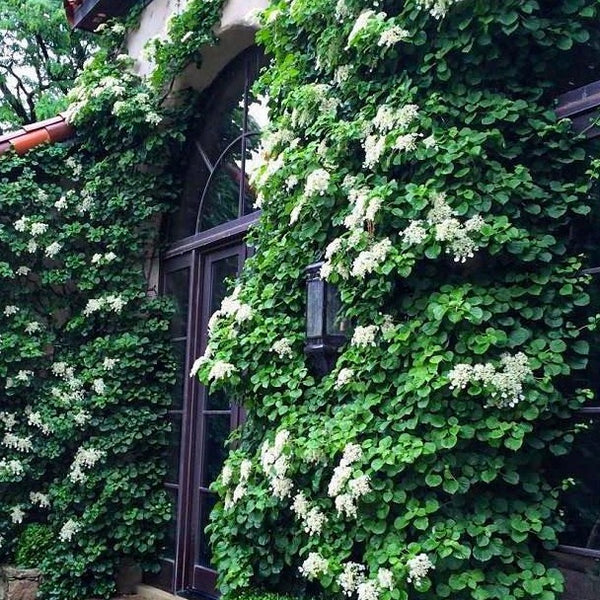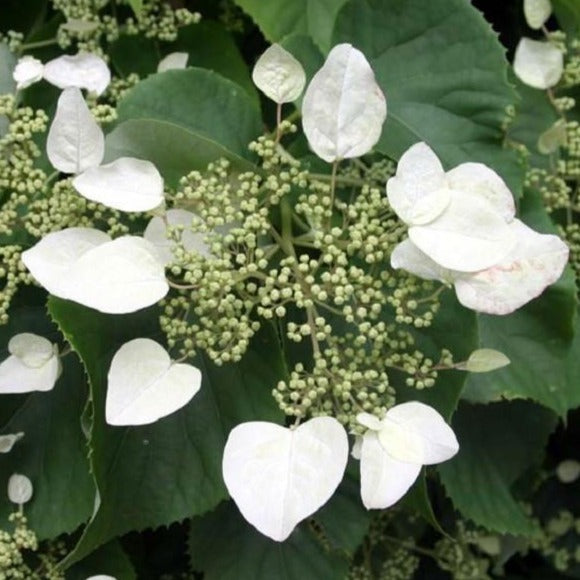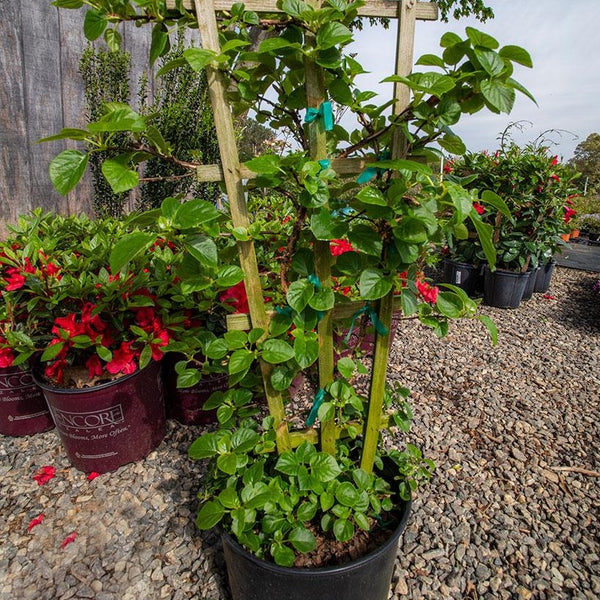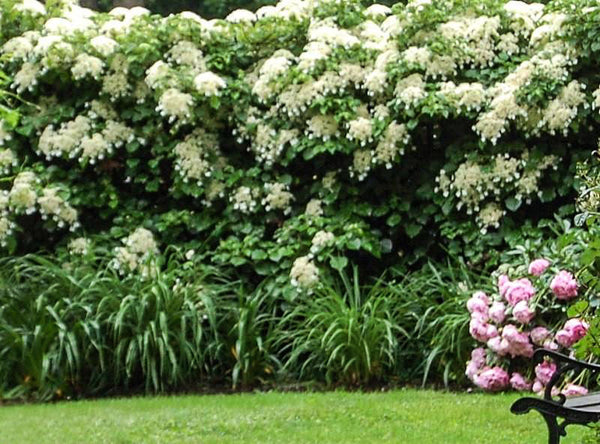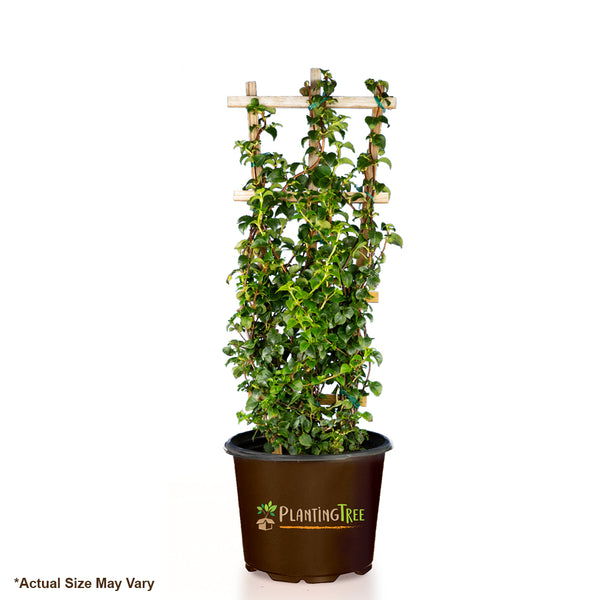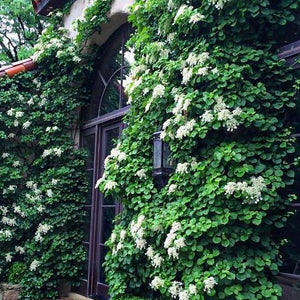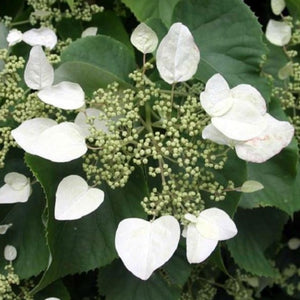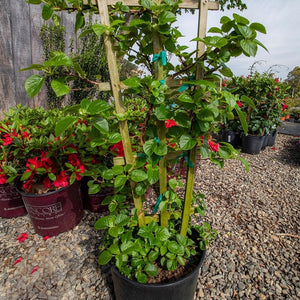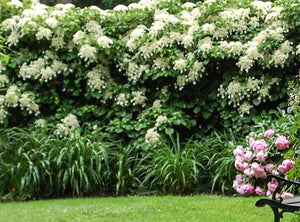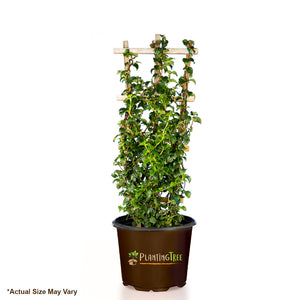White Climbing Hydrangea Vine
Product Details
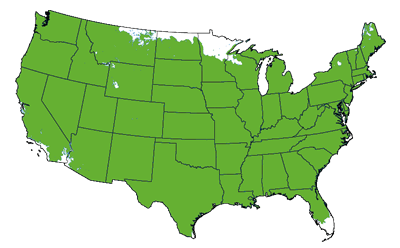 Growing Zones 4-9
Growing Zones 4-9
| Soil Type | Adaptable |
| Sunlight | Full, Partial, Shade |
| Drought Tolerance | Semi |
| Mature Height | 40-60 Feet |
| Mature Width | 10-15 Feet |
| Bloom Color | White |
| Shipping Restriction | AZ |
Hydrangeas are loved all over the world for their beauty. The Climbing Hydrangea certainly isn't short on this prized feature, but it is so much more than your everyday hydrangea! You are going to fall madly in love with this one-of-a-kind hydrangea vine!
Classic white, lace-cap flowers and lush, green foliage dance over ugly, old fences and barren walls transforming them into something out of impressionist painting.
The White Climbing Hydrangea Vine is deciduous so it helps conserve energy by allowing the sun to penetrate in winter and shading your home from the sun in summer.
While this lovely, large vine is slow to get started it is well worth the wait! After this leisurely establishment period, the Climbing Hydrangea takes off and quickly fills in those boring or unsightly spots in your landscape. This hydrangea grows in full sun to FULL SHADE!
YES, it even flowers in shade! Like other hydrangeas, the climbing hydrangea will do best with some shade in warmer climates. Plant in moist, well-draining soil and fertilize with a slow-release fertilizer (like the one we carry - hint hint) when planting and in spring. Fertilize in summer too for an extra boost, especially if you have deficient soil. No pruning is needed other than to control the size and maintain shape. This hydrangea is a low-maintenance plant.
The Climbing Hydrangea is like something out of a fairy tale. Don't miss out on this truly special plant! Order yours today!
Does This Hydrangea Need A Trellis?
As a flowering vine that will climb a variety of structures including fences, trellis and other vertical surfaces in the landscape, the climbing hydrangea is also known to be used as groundcover in garden beds.
How Big Does This Vine Get?
Over 50 feet tall at maturity.
When Does This Hydrangea Vine Bloom?
You can expect beautiful lush white blooms from this flowering vine throughout spring and summer.
When planting your Climbing Hydrangea be sure you have the right location and conditions for your new plant to thrive. Spring and fall are ideal times to plant Hydrangeas. Avoid planting hydrangeas in summer especially when temperatures are mid80s or higher.
The Climbing Hydrangea can grow in full sun to full shade and prefers moist, well-drained, fertile soil. In warmer climates, be sure this Hydrangea has some shade. Keep the soil moist, but not saturated, especially in summer and in the first year after planting. Throughout its life Hydrangeas will do best with a deep watering once weekly during hot temperatures. Mulching at about 3 inches deep is highly recommended for hydrangeas. Mulching will cut back on watering needs and protect your plant in extreme temperatures. Choose a slow release fertilizer (like the one you can purchase here). Fertilize once in spring and again in summer for best results. You don’t need to prune this hydrangea, but pruning after blooming has ceased can help encourage a denser growth, renew an older plant, and maintain size.
The best way to prevent disease and pests is by providing the appropriate care for your plants. Proper location choice, watering, and fertilization are the keys to your success. You can treat mites, scale, whiteflies, and aphids naturally with neem oil or insecticidal soap. For severe infections you can use pesticides like carbaryl, also known as Sevin. Fungal infection can be prevented by making sure the planting site has good drainage and by avoiding overhead watering. Fungal infections can be treated with a fungicide. Generally, treating fungus after infection isn't effective so if you have problems with other plants or in a prior year, treat preventatively in early spring.
The Climbing Hydrangea climbs walls, fences, trellises and more, transforming them into a true vision! It is an inexpensive way to mask an ugly fence. Allow this clinging vine to grow up an arbor or creep along the ground in a lovely cottage garden. This vine can be used as a unique ground cover. Allow it to choose its own path, crawling along the ground, over rocks, and down slopes and low walls. The Climbing Hydrangea can be used in place of invasive ivy for the walls of your home. It is deciduous so it helps conserve energy by allowing sun to penetrate in winter and shading your home from the sun in summer. Let this noninvasive, but clingy vine crawl up a boring shade tree for a stunning look.
Learn when to prune your flowering shrubs.
For additional options, be sure to browse our Hydrangea and Hydrangea tree collections.


